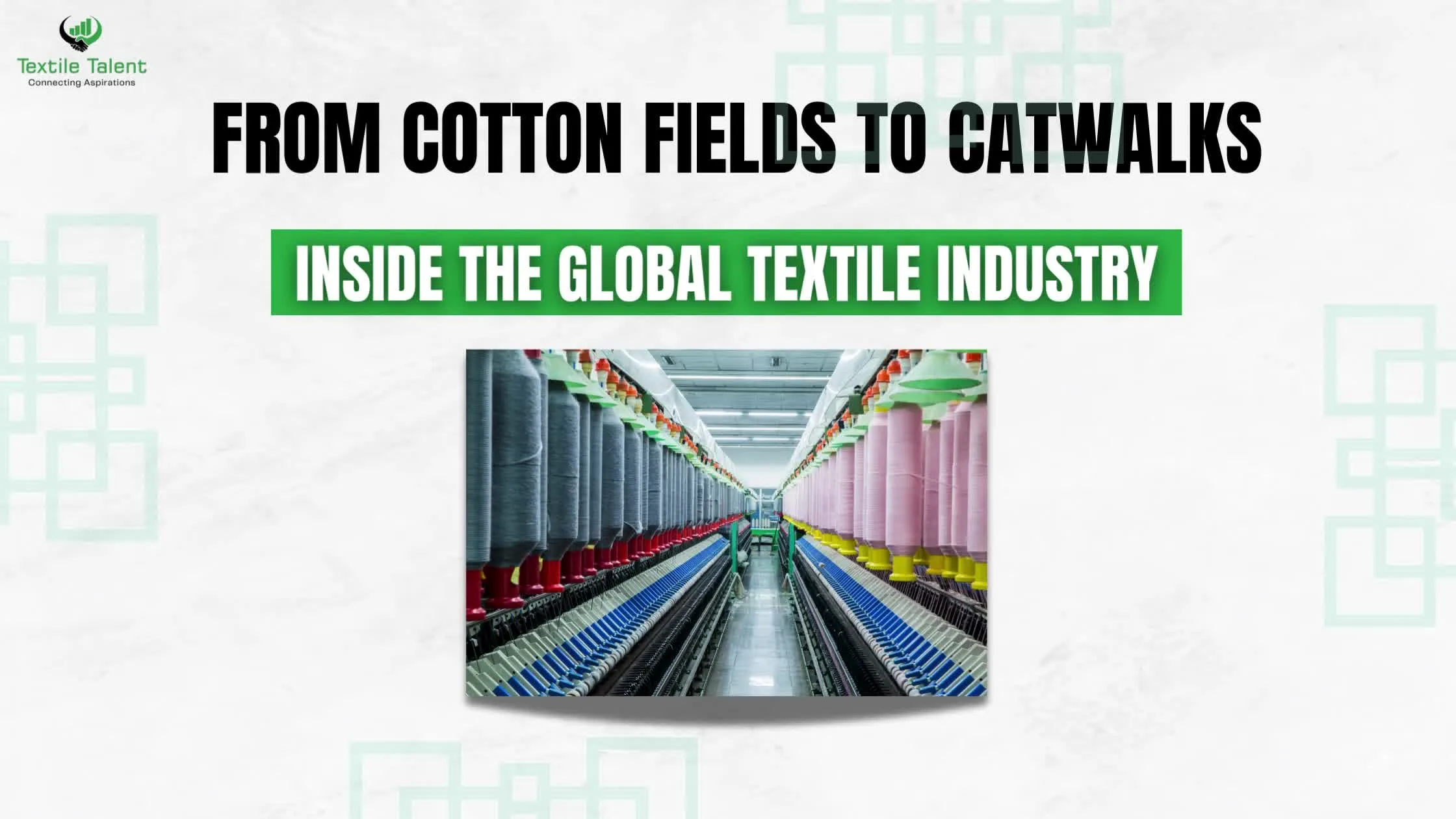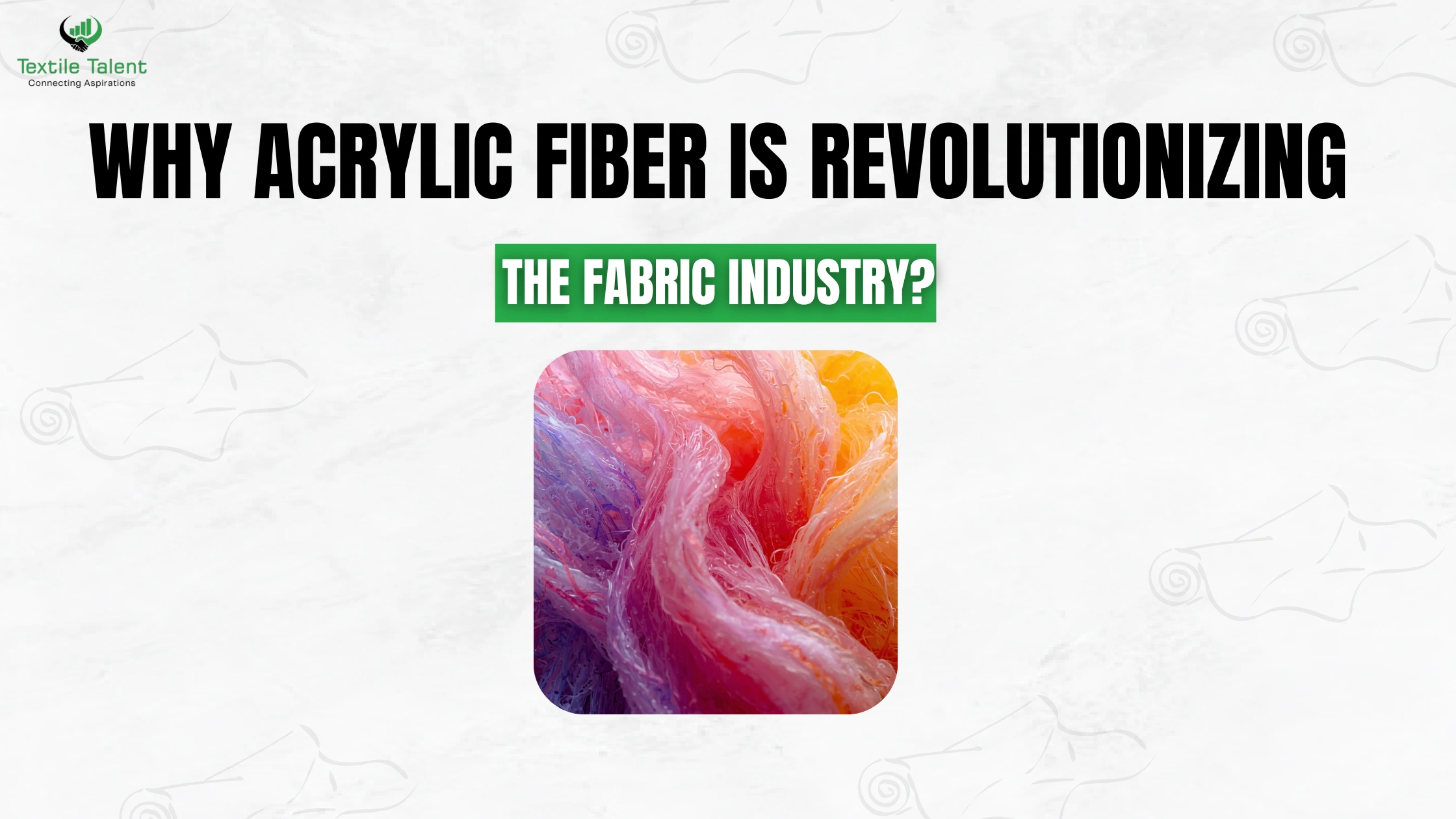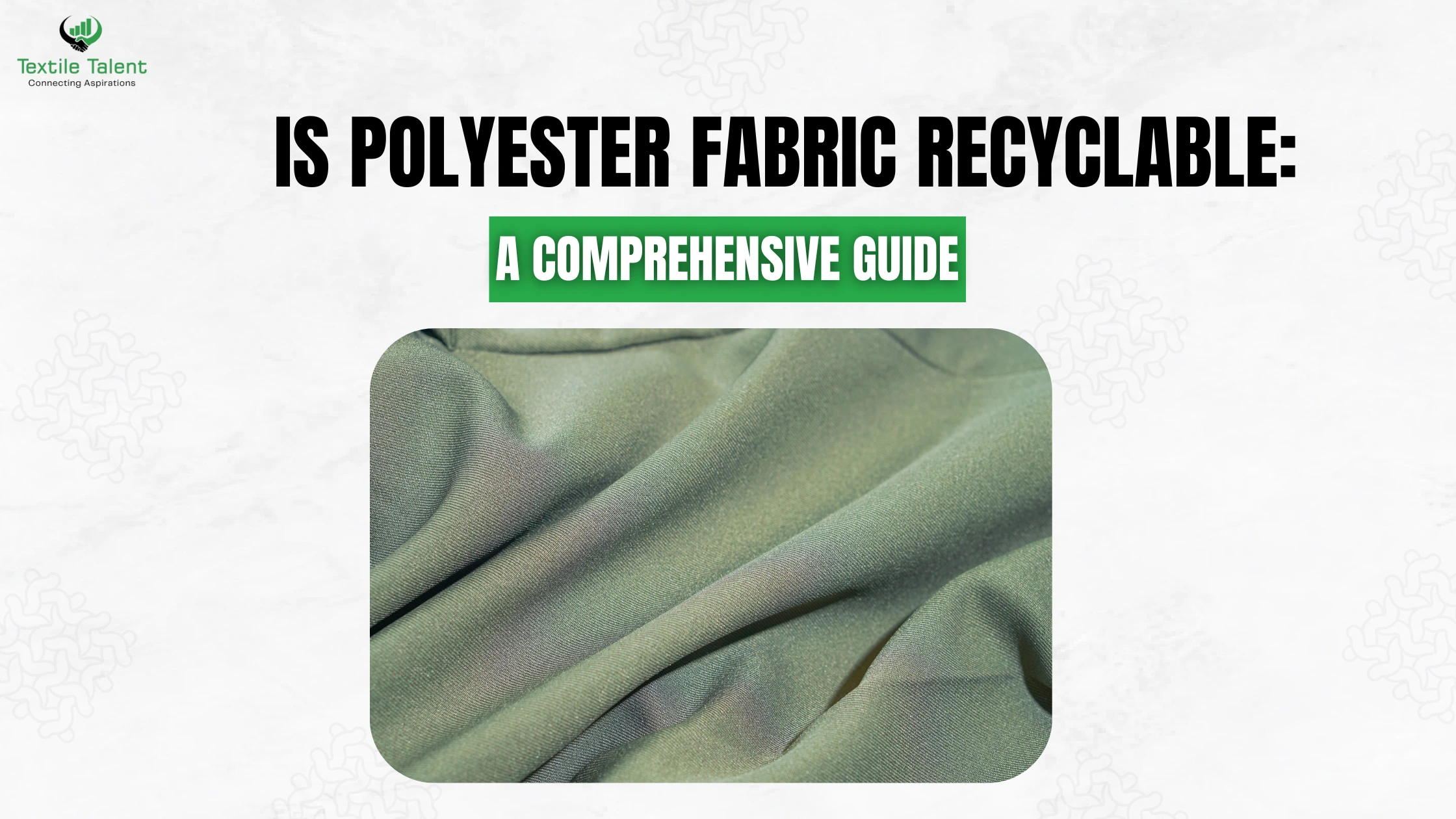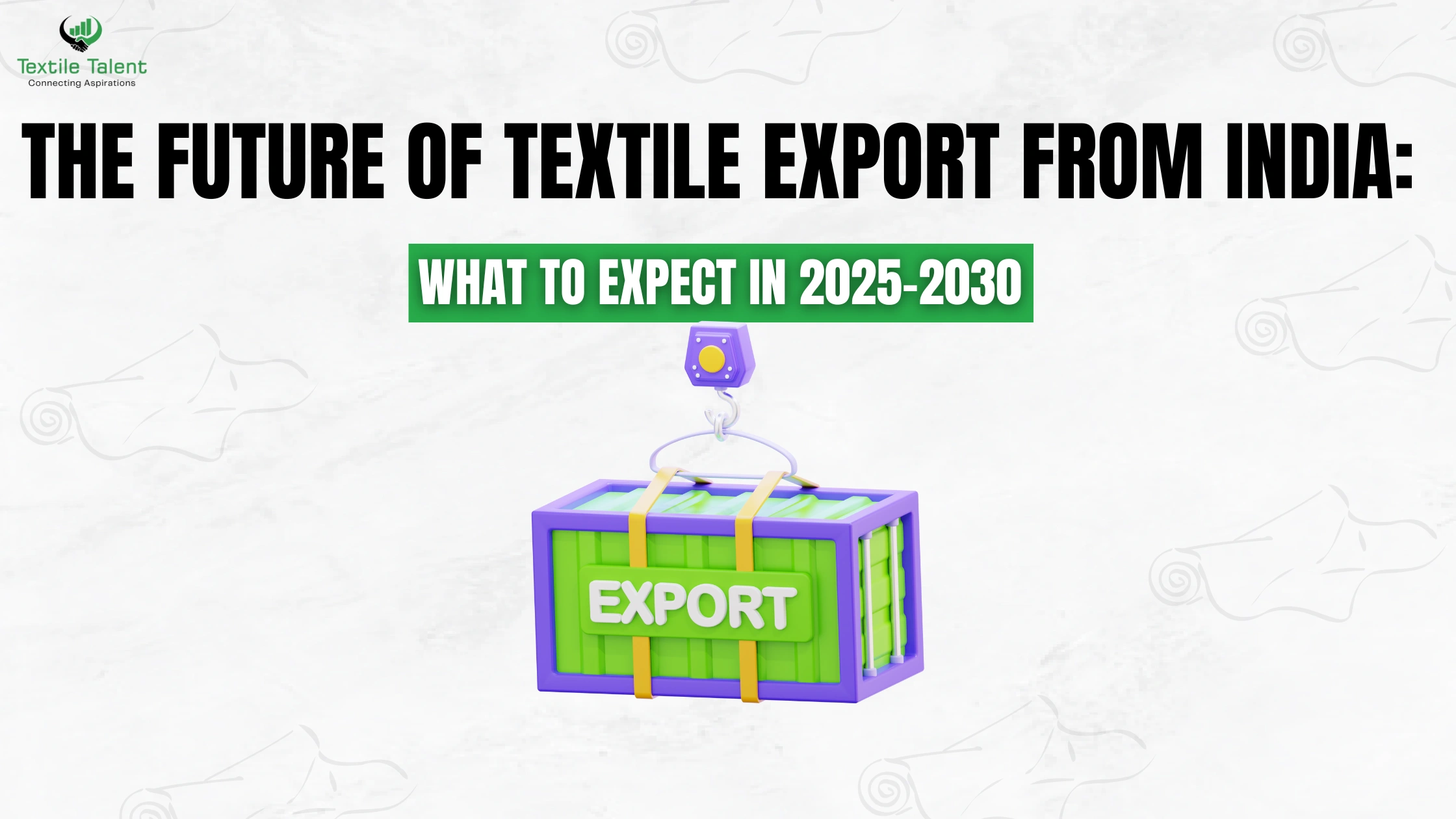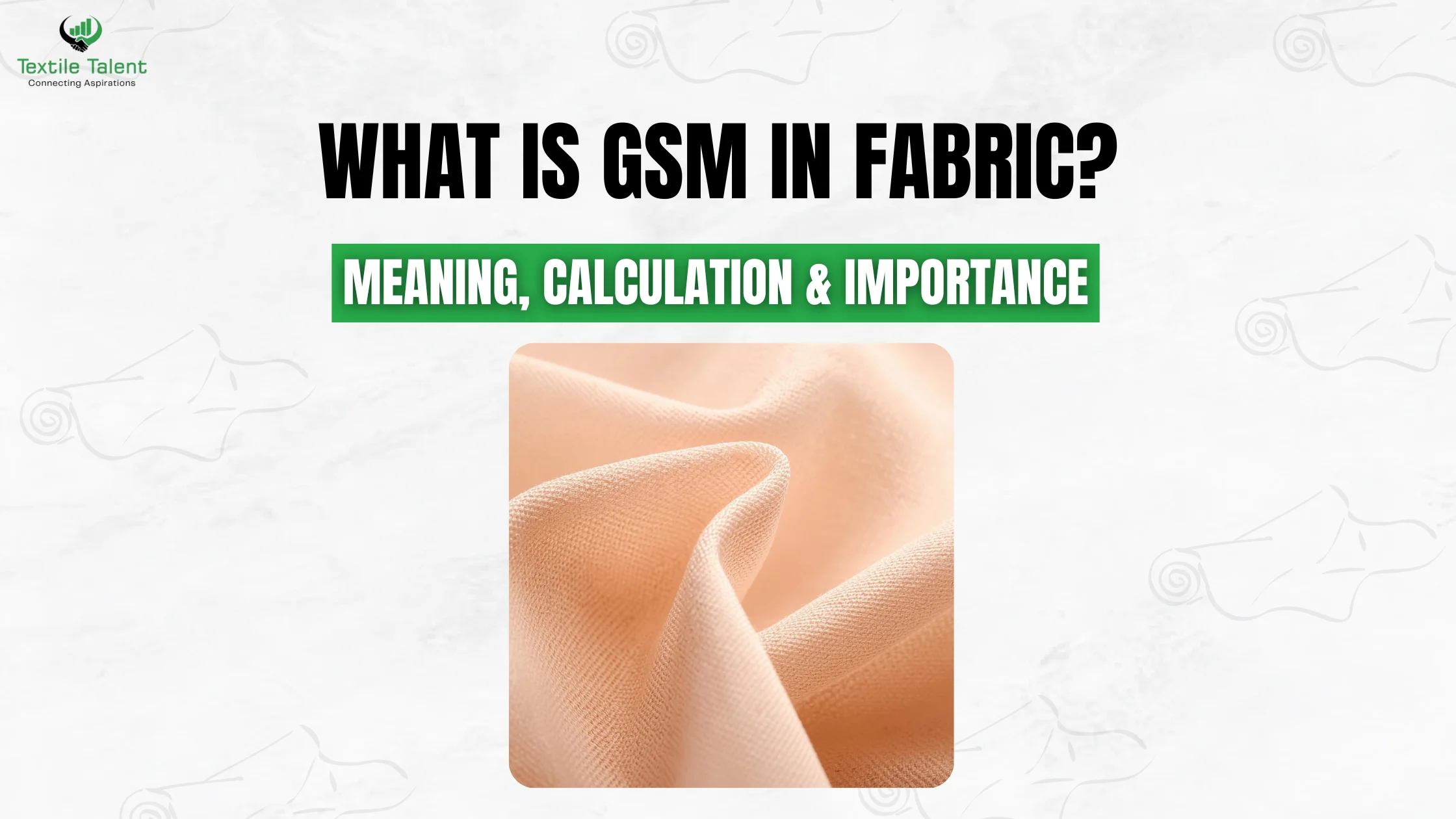
Summary
Global Textile Industry is arguably the fastest growing and vital industry in the global economy as it links together the farmers, manufacturers, designers and consumers spanning the continents. It is found in textiles that cloth us in runways to cotton fields and every single aspect of our day to day lives. This paper goes into detail about the anatomy of the textile world, the history of it, innovations and where it is headed, and applied a conversational tone to simplify complex global trends in textile world. It also includes a review of major markets, critical issues in the current world, and a conveniently asked frequently asked questions at the end.
Introduction
Clothes are so much more than merely textiles, and much more than merely something we wear as they signify culture and identity and globalization. If it is a cotton t-shirt or a fancy silk dress, the pathway is a network of industries and economies spanning across the world. The Global Textile Industry is known to contribute tremendously to almost every industry in the world like agriculture, chemical engineering, fashion design, and international trade. In this paper, we will be discussing how products of the cotton fields make their way into the catwalk of high-fashion as well as what changes these nations are bringing to this industry that is continuously evolving every single day. Be a fashion lover, entrepreneur, or just a curious creature, this is how you will gain your backstage access to the powerhouse of the world wardrobe.
What is the Global Textile Industry and Why Is It So Important?
Global Textile Industry A Global Textile Industry is defined as the results of the entire supply line of creating cloth-based articles, including the growth of natural fibers such as cotton, the creation of synthetic products, the designing and building of clothes and house items. It is one of the biggest employers on the globe and a big participant to global trade.
How Did the Global Textile Industry Evolve Over Time?
The textile industry has existed since thousands of years, when ancient peoples used to spin fiber with their hands. It was however the industrial revolution that transformed the textile process. In the modern times, manual looms have been replaced by high-tech machines and automation, and global chain of supplies takes the center stage. The switch has both opened fashion massively to the masses but complicated it as well.
Where Do Cotton and Other Natural Fibers Fit In?
The Cotton Textile Industry In The World is fundamental. Cotton has been the most commonly utilized natural fiber in the world and especially in the countries such as India, China and their counterparts in America. Other than cotton, other material such as wool, linen and silk still play their niche but useful roles in the marketplace, mostly in the luxury fashion sphere and other specialized products.
How Is the Global Textile Market Structured Today?
TheGlobal Textile Market is vastly diverse in nature and also has segments based on fiber type (natural or synthetic fiber), application (apparel, industrial, home textiles) and geography. The trade is dominated by Asia which produces and consumes in large quantities yet demand continues to grow globally.
Which Countries Dominate the Textile Industry Worldwide?
The textile industries are majorly played in China, India, Bangladesh and Vietnam. China leads as the Largest Textile Industry In the World, thanks to its advanced manufacturing infrastructure and access to raw materials. However, you have an increase in labor costs which are pushing production into other countries where labor is cheap. If we talk about India then with its vast workforce and skilled labor, textile industry jobs in India continue to play a crucial role in powering the nation’s manufacturing and export capabilities
What Role Does Sustainability Play in Today’s Textile Industry?
The problem of Sustainability has gained great importance to the Textile Industry Worldwide Fast fashion has resulted in huge wastages and environmental destruction. As a reaction to it, the companies are currently prioritizing recycling technologies, environmental friendly materials, and moral labor. Consumers are also wanting to know more and this is making the industry move toward greener alternatives.
What Are the Latest Innovations in Textile Manufacturing?
Modern textile production is far more than just weaving and dyeing. Innovations in materials science, AI, and automation are reshaping the landscape.
How Are Smart Fabrics Changing the Game?
Technology-enabled fabrics, or smart fabrics as they are being referred to in the market, are finding their way into fitness clothing to clinical monitoring. Such fabrics are able to monitor heart rate, regulate the temperature in the body, or are capable of charging your phone. It is an enlarging segment of the Global Textile Industry.
Can Automation Solve Labor Challenges in Textile Production?
Both and none. Automation means more reliance less of manual labour and efficiency especially in spinning and dyeing. However in poorer nations where textiles industries have been offering lakhs of people employment, their full automation would result in unemployment and economic imbalance.
What Challenges Does the Textile Industry Face Globally?
While the industry is growing, it’s not without hurdles — from environmental pressures to geopolitical tensions.
Is Globalization a Blessing or a Burden for the Textile Industry?
Globalization enables affordable production as well as trade across nations. Nevertheless, it forms the dependencies, which may become weak in cases of crises, as was experienced during the COVID-19 pandemic when supply chains were immensely shocked.
How Are Trade Wars and Tariffs Affecting the Textile Sector?
Textile industry is very sensitive towards trade policies. The raw materials and finished products trade can be affected by the tariffs between countries such as the U.S and China, making products more expensive to business and consumer.
How Does Fashion Influence the Textile Industry Worldwide?
The trend is a massive source of innovation and need in the textile industry. Since the invention of haute couture to streetwear, you can not avoid the fact that fashion is constantly changing, which requires the textile business to keep up so fast.
What Role Do Designers and Brands Play?
The designers affect the choice of material and manufacturing methods. Major fashion designers will then enter into partnership with textile companies with the aim of creating new fabrics or renewing ancient ones which makes the industry dynamic and responsive.
Can Sustainable Fashion Drive Long-Term Change?
Absolutely. Now that the big names are joining the green revolution, there is a huge demand of green textiles. This transition therefore is not only good to the environment but also provides a new way of doing business within the Global Textile Market.
What’s Next for the Global Textile Industry?
Going into the future, the textile industry has been projected to expand, but this will largely be reliant on being sustainable, technology, and flexibility to consumer trends.
Will AI and Data Analytics Redefine the Industry?
AI is already assisting manufacturers to forecast the demand, streamline the chain of supplies, and minimize wastage. In tandem with big data, it makes smarter production approaches and inventory management and brings the industry efficiency.
How Will the Industry Adapt to Future Global Challenges?
The industry should be robust, climate change, economic turmoil, fluctuating the dynamics of trade are all threats. Companies which spend money on innovation and having an ethical conduct have more chances to prosper.
Frequently Asked Questions (FAQ)
Q1: What is the Global Textile Industry?
A: It is an industry that also comprises garment and textile manufacturing, processing, distribution, and all other types of garment and textile industries involved in the industry all over the globe.
Q2: Which country has the Largest Textile Industry In the World?
A: The current possessor of this title is China because of its developed infrastructure, technological sector and a huge number of workers.
Q3: How does the Cotton Textile Industry In the World affect global fashion?
A: Cotton will always have a place fashion, a combination of its versatility and comfort levels made it the foundation of luxury brands as well as mass-market goods.
Q4: Is the Global Textile Market growing?
A:Yes, it is increasing constantly, but more so in Asia-Pacific demands with an increase in the trend of sustainability and smart textiles.
Q5: What are the key challenges in the Textile Industry Worldwide?
A: The largest ones refer to developments in the field of environmental issues, labor rights violations, global trade disruption.

